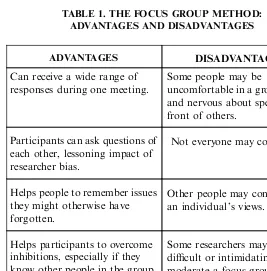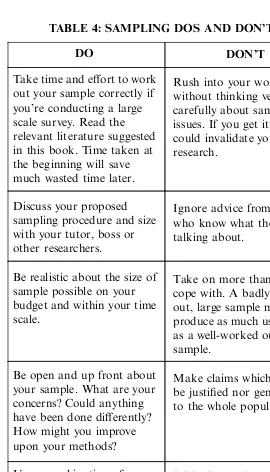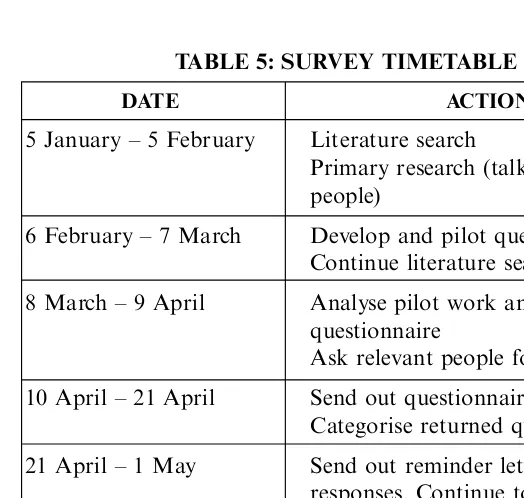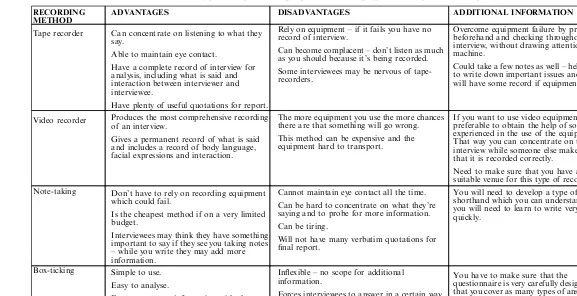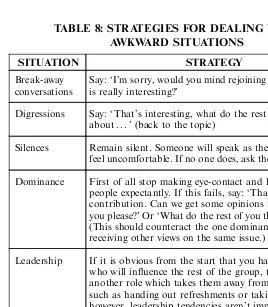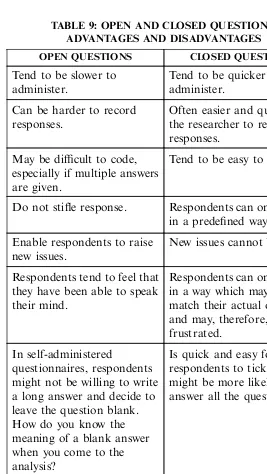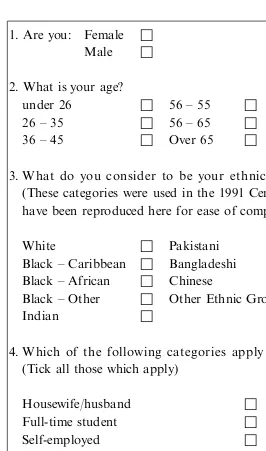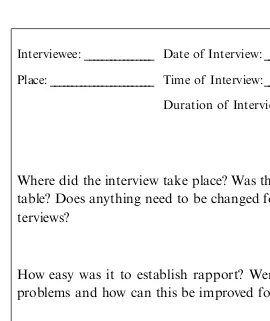Informasi Dokumen
- Penulis:
- Dr Catherine Dawson
- Sekolah: How To Books
- Mata Pelajaran: Research Methods
- Topik: A Practical Research Methods
- Tipe: Book
- Tahun: 2002
- Kota: Oxford
Ringkasan Dokumen
I. How to Define Your Project
This section emphasizes the importance of defining a research project before diving into methodologies. It encourages researchers to ask fundamental questions about their motivations, interests, and the characteristics that will aid their research. By understanding the five 'Ws'—What, Why, Who, Where, and When—researchers can clarify their objectives and streamline the research process. The section highlights that a well-defined project is crucial for maintaining motivation and ensuring the research is manageable and relevant.
1.1 Asking Questions
This subsection discusses the necessity of self-reflection in research. Researchers are urged to consider their motivations for conducting research, which can affect their engagement and persistence throughout the project. By identifying personal interests and strengths, researchers can align their projects with their capabilities, leading to a more fulfilling research experience.
1.2 The Five ‘Ws’
The five 'Ws' framework serves as a guide for researchers to articulate their project clearly. Each 'W' prompts critical thinking about the research's scope and feasibility. For instance, defining 'What' the research is about helps narrow down the focus, while 'Who' identifies the target participants, ensuring the research is relevant and achievable.
II. How to Decide Upon a Methodology
This section introduces the concept of research methodology, differentiating it from research methods. It discusses the philosophical underpinnings that guide research decisions and the importance of understanding qualitative and quantitative approaches. By recognizing the strengths and weaknesses of each methodology, researchers can select the most appropriate approach for their specific project, enhancing the quality and relevance of their findings.
2.1 Understanding the Difference Between Qualitative and Quantitative Research
Qualitative research focuses on exploring attitudes and experiences in-depth, often involving fewer participants for detailed insights. In contrast, quantitative research emphasizes statistical analysis and larger sample sizes for broader generalizations. This subsection stresses that both methodologies are valuable and should be chosen based on the research question and objectives.
2.2 Deciding Which Methodology is Right for You
Researchers are encouraged to reflect on their instincts and preferences when choosing a methodology. This section suggests that personal comfort with qualitative or quantitative methods can enhance motivation and productivity. Furthermore, it highlights the potential for combining both approaches to leverage the strengths of each, known as triangulation.
III. How to Choose Your Research Methods
This section outlines various research methods, including interviewing, focus groups, questionnaires, and participant observation. Each method is evaluated based on its applicability to different types of research questions and objectives. By understanding the characteristics and appropriate contexts for each method, researchers can make informed decisions that align with their methodological framework.
3.1 Interviewing
Interviewing is categorized into unstructured, semi-structured, and structured formats. Unstructured interviews allow for open-ended exploration, while semi-structured interviews balance specific inquiries with flexibility. Structured interviews, common in quantitative research, provide standardized data collection. This subsection emphasizes the importance of selecting the right interview type based on the research goals.
3.2 Focus Groups
Focus groups facilitate discussions among participants to gather diverse perspectives on a topic. This method is valuable for understanding group dynamics and collective opinions. The section discusses the advantages and challenges of focus groups, including participant comfort and the role of the moderator in guiding discussions.
3.3 Questionnaires
Questionnaires are categorized into closed-ended, open-ended, and mixed formats. Closed-ended questions yield quantifiable data, while open-ended questions provide qualitative insights. The section highlights the importance of careful design to ensure clarity and relevance, as well as the emerging trend of digital questionnaires for broader reach and engagement.
3.4 Participant Observation
Participant observation involves immersing oneself in the research environment to gather firsthand insights. This method is particularly useful for qualitative research, allowing researchers to experience the context of their study. Ethical considerations and the balance between participation and observation are discussed as crucial elements in this method.
IV. How to Conduct Background Research
This section differentiates between primary and secondary research, emphasizing the importance of background research in establishing a solid foundation for any study. Primary research involves collecting new data directly from participants, while secondary research utilizes existing literature and data. Understanding the context and existing knowledge in the field enhances the relevance and depth of the research.
4.1 Primary Research and Secondary Research
Primary research is essential for addressing specific research questions and filling gaps in existing knowledge. In contrast, secondary research provides context and background, helping to frame the research problem. This subsection encourages researchers to critically evaluate existing literature to inform their methodology and approach.
V. How to Choose Your Participants
This section focuses on the importance of participant selection in research design. It discusses sampling techniques, sample size considerations, and the implications of participant characteristics on the research outcomes. By carefully selecting participants, researchers can ensure that their findings are valid and applicable to the intended population.
5.1 Sampling
Sampling strategies, including random, stratified, and convenience sampling, are explored. Each method has its advantages and limitations, and the choice of sampling technique should align with the research goals. This subsection emphasizes the need for transparency in sampling decisions to enhance the credibility of the research.
5.2 Sample Size
Determining the appropriate sample size is crucial for achieving statistically significant results. This subsection discusses factors influencing sample size, including the research design, population variability, and resource availability. Researchers are encouraged to balance the need for a representative sample with practical constraints.
VI. How to Prepare a Research Proposal
This section outlines the essential components of a research proposal, emphasizing clarity and coherence in presenting the research plan. A well-structured proposal not only guides the research process but also communicates the researcher's intentions to stakeholders. By addressing common pitfalls in proposal writing, researchers can enhance their chances of approval and support.
6.1 The Contents of a Proposal
Key elements of a research proposal include the research question, methodology, participant selection, and timeline. This subsection provides a checklist for researchers to ensure that their proposals are comprehensive and persuasive. Clear articulation of the research's significance is highlighted as a critical factor in proposal success.
6.2 What Makes a Good Proposal?
A good proposal is characterized by clarity, feasibility, and relevance. This subsection discusses the importance of aligning the research objectives with the interests of potential funders or stakeholders. By demonstrating the potential impact of the research, researchers can strengthen their proposals.
VII. How to Conduct Interviews
This section delves into the practical aspects of conducting interviews, highlighting techniques for effective communication and data collection. Establishing rapport, crafting an interview schedule, and employing active listening skills are emphasized as critical components of successful interviews. By mastering these techniques, researchers can enhance the quality of the data collected.
7.1 Methods of Recording
Effective recording methods are vital for capturing interview data accurately. This subsection discusses various techniques, including audio recording, note-taking, and transcription. The choice of recording method should consider both ethical implications and the research context to ensure participant confidentiality and data integrity.
7.2 The Interview Schedule
An interview schedule serves as a roadmap for the interview process, guiding the researcher while allowing flexibility for exploration. This subsection outlines best practices for developing an effective interview schedule that balances structured questions with opportunities for open-ended responses.
VIII. How to Conduct Focus Groups
This section provides insights into the dynamics of focus groups, emphasizing the role of the moderator in facilitating discussions. Techniques for managing group interactions, ensuring equitable participation, and capturing diverse perspectives are discussed. By understanding group dynamics, researchers can maximize the richness of the data obtained from focus group discussions.
8.1 The Role of the Moderator
The moderator plays a crucial role in guiding the focus group discussion, ensuring that all participants contribute while managing any dominant voices. This subsection discusses strategies for effective moderation, including preparing discussion prompts and fostering a supportive environment for open dialogue.
8.2 Recording Equipment
Selecting appropriate recording equipment is essential for capturing focus group discussions accurately. This subsection outlines considerations for choosing recording devices, including audio and video options, and the importance of testing equipment prior to the session to avoid technical issues.
IX. How to Construct Questionnaires
This section focuses on the design and construction of effective questionnaires. It discusses the importance of question wording, structure, and length in ensuring clarity and relevance. By adhering to best practices in questionnaire design, researchers can enhance response rates and data quality.
9.1 Deciding Which Questionnaire to Use
Selecting the appropriate type of questionnaire—closed-ended, open-ended, or mixed—is crucial for achieving research objectives. This subsection discusses the strengths and weaknesses of each type, guiding researchers in their decision-making process to align with their research questions.
9.2 Wording and Structure of Questions
Clear and concise wording is vital for questionnaire effectiveness. This subsection provides guidelines for crafting questions that minimize ambiguity and bias, enhancing the reliability of the data collected. The importance of logical question flow and grouping related items is also emphasized.
X. How to Carry Out Participant Observation
This section explores the intricacies of participant observation as a research method. It discusses the balance between involvement and observation, ethical considerations, and strategies for data collection and analysis. By immersing themselves in the research context, researchers can gain valuable insights into participant behaviors and experiences.
10.1 Gaining Access
Securing access to research settings is a critical step in participant observation. This subsection discusses strategies for establishing rapport with gatekeepers and participants, as well as ethical considerations in gaining consent for observation.
10.2 Ethics
Ethical considerations in participant observation include informed consent, confidentiality, and the potential impact of the researcher on the observed group. This subsection emphasizes the importance of ethical guidelines to protect participants and maintain research integrity.
XI. How to Analyse Your Data
This section outlines the processes involved in data analysis, distinguishing between qualitative and quantitative approaches. It discusses various analytical techniques and the importance of selecting the appropriate method based on the research design. By employing systematic analysis, researchers can derive meaningful insights from their data.
11.1 Qualitative Data Analysis
Qualitative data analysis involves coding and categorizing data to identify themes and patterns. This subsection discusses various approaches to qualitative analysis, including thematic analysis and grounded theory, highlighting the iterative nature of qualitative research.
11.2 Quantitative Data Analysis
Quantitative data analysis focuses on statistical techniques to interpret numerical data. This subsection outlines common statistical methods, including descriptive and inferential statistics, and emphasizes the importance of software tools in facilitating data analysis.
XII. How to Report Your Findings
This section provides guidance on effectively communicating research findings through various formats, including written reports, journal articles, and oral presentations. It emphasizes the importance of clarity, coherence, and audience awareness in reporting, ensuring that research outcomes are accessible and impactful.
12.1 Written Reports
Written reports serve as a comprehensive account of the research process and findings. This subsection discusses the structure and essential components of a research report, including the introduction, methodology, results, and discussion sections.
12.2 Oral Presentations
Oral presentations are an effective way to share research findings with diverse audiences. This subsection provides tips for engaging presentations, including the use of visual aids, clarity of speech, and audience interaction to enhance understanding and retention.
XIII. How to be an Ethical Researcher
This section emphasizes the importance of ethical considerations in research. It discusses the principles of respect for participants, informed consent, and the necessity of adhering to ethical guidelines throughout the research process. By prioritizing ethics, researchers can ensure the integrity and credibility of their work.
13.1 Treating Participants with Respect
Respecting participants is a fundamental ethical principle in research. This subsection discusses the importance of valuing participants' rights, dignity, and confidentiality, ensuring that their well-being is prioritized throughout the research process.
13.2 Code of Ethics
Adhering to a code of ethics is essential for maintaining research integrity. This subsection outlines the key components of ethical research practices, including transparency, accountability, and the commitment to minimizing harm to participants.
Referensi Dokumen
- Data Protection Act 1998 ( UK Government )
- Statement of Ethical Practice ( British Sociological Association )
